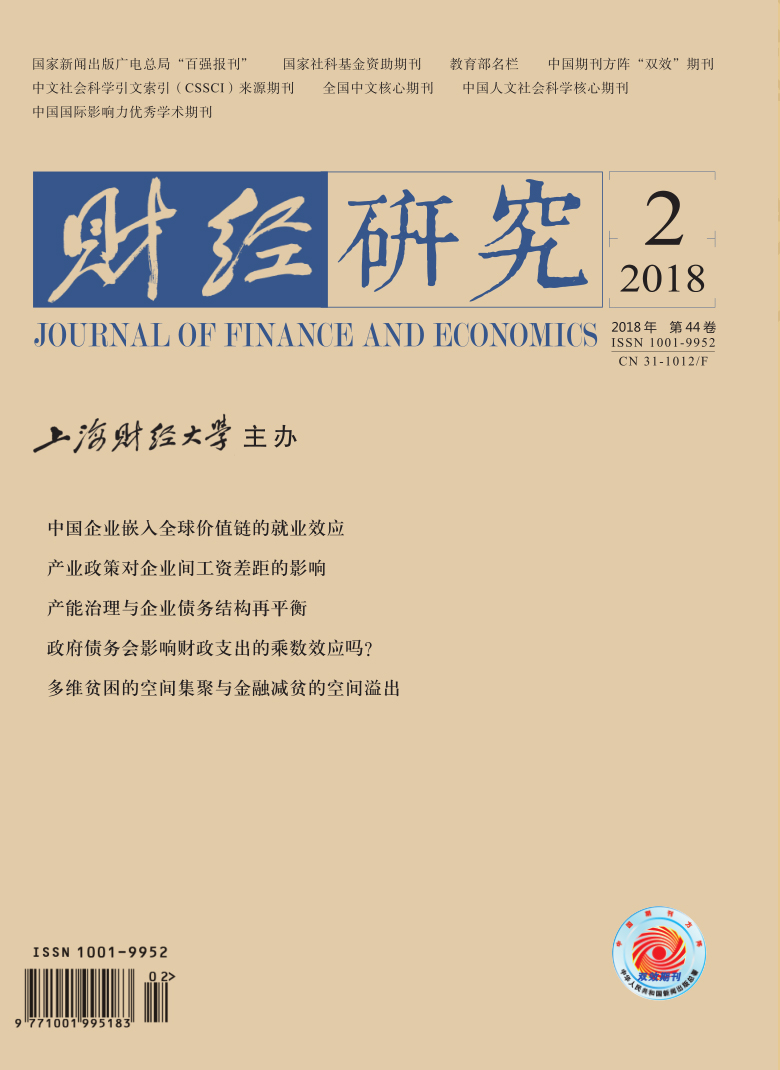The unbalanced development within the Chinese industries may bring the imbalance of income among different groups. What kind of role does industrial policy play, namely whether the implementation of China industrial policy brings the wage gap between enterprises? This paper considers subsidies as the breakthrough point, introduces industrial policy factor into a heterogeneous enterprise model, and theoretically decomposes the impact of industrial policy on enterprise wages into two mechanisms, namely subsidy transfer effect and competition effect. And it puts forward the following hypotheses: the enterprises spend part of policy subsidies on production, and now more wages paid are equivalent to direct fiscal subsidies; at the same time, enterprise wage level also depends on enterprise production efficiency, and industrial policy changes enterprise efficiency through promoting or inhibiting industrial competition, thereby having an indirect influence on enterprise wage level, namely competition effect. Next, this paper empirically checks above theoretical hypotheses by using the data of Chinese industrial enterprises above designated size from 1998 to 2007. Specifically, the control variables are gradually added, and the variable reflecting subsidy policy has always been a negative relationship with enterprise wage level. After controlling total factor productivity of enterprises, this relationship between subsidy policy and enterprise wage level becomes positive, while the impact of subsidies on total factor productivity of enterprises is negative. Then we can conclude that: negative competition effect resulting from China-style industrial policy through inhibiting enterprise efficiency exceeds positive subsidy transfer effect, finally leading to a reduction in enterprise wage level. This paper further explores the issue of a competition-friendly industrial policy based on Aghion et al.(2015)that shows the dispersion of government industrial policy coverage. Once industrial policy target is more extensive, the competitive effect of policy on enterprise wages will turn positive, and enterprise wage level will increase accordingly. These research conclusions help to understand the impact of industry policy on enterprise wages in the process of economic reform, enrich the related research of enterprise wages, and have enlightenment for deepening the reform: the unreasonable implementation of industrial policy has hindered the reform of basic wage system reform in China, and we can not bring some enterprises’ revenues to subsidize the other; the fairness of this behavior is questionable, and how to give priority to efficiency as well as equity needs to be weighed carefully and repeatedly by policy formulators. Subsidies for some enterprises can be converted into wage subsidies for skilled workers, which on the one hand, attract talents to enterprises and help enterprises to improve efficiency and on the other hand, avoid the negative effects resulting from direct subsidies for enterprises.
 / Journals / Journal of Finance and Economics
/ Journals / Journal of Finance and EconomicsJournal of Finance and Economics
LiuYuanchun, Editor-in-Chief
ZhengChunrong, Vice Executive Editor-in-Chief
YaoLan BaoXiaohua HuangJun, Vice Editor-in-Chief
The Effect of China Industrial Policy on the Wage Gap between Enterprises: Empirical Evidence from Chinese Industrial Enterprises
Journal of Finance and Economics Vol. 44, Issue 02, pp. 17 - 29 (2018) DOI:10.16538/j.cnki.jfe.2018.02.002
Summary
References
Summary
[1] Han Chao, Xiao Xingzhi, Li Shu. How Did Industrial Policies Affect Business Performance: Does the Locus of Different Policies and Paths Matter?[J]. Journal of Finance and Economics, 2017, 43(1):122-133.(In Chinese)
[2] Liu Haiyang, Kong Xiangzhen, Ma Jing. Does the Subsidy Distort the Buying Behavior of Chinese Industrial Enterprises?[J]. Management World, 2012,(10):119-129.(In Chinese)
[3] Mao Qilin, Xu Jiayun. Government Subsidy, Heterogeneity and Corporate Risk-taking[J]. China Economic Quarterly, 2016, 15(4):1533-1562.(In Chinese)
[4] Shao Min, Bao Qun. Analysis on the Behavior of Local Government Subsidized Enterprises: to Support the Strong or to Protect the weak?[J]. World Economic Papers, 2011, 1(1):56-72.(In Chinese)
[5] Tan Shiyu, Wu Wanzong, Xia Dawei. Local Content Policy and Total Factor Productivity: Evidence from Automobile Component Manufacturing[J]. Journal of Finance and Economics, 2017, 43(4):82-95.(In Chinese)
[6] Xiao Xingzhi, Wang Yipan. Are Government Subsidies in Strategic Emerging Industry Used at the Key Point?——Empirical Evidence from 254 Listed Companies[J]. Economic Management Journal, 2014, 36(4):19-31.(In Chinese)
[7] Aghion P, Cai J, Dewatripont M, et al. Industrial Policy and Competition[J]. American Economic Journal : Macroeconomics, 2015, 7(4) :1-32.
[8] Helpman E, Itskhoki O, Redding S. Inequality and Unemployment in A Global Economy[J]. Econometrica, 2010, 78(4) : 1239-1283.
[9] Yeaple S R. A Simple Model of Firm Heterogeneity, International Trade, and Wages[J]. Journal of International Economics, 65(1) : 1-20.
Cite this article
Wu Wanzong, Tan Shiyu, Xia Dawei. The Effect of China Industrial Policy on the Wage Gap between Enterprises: Empirical Evidence from Chinese Industrial Enterprises[J]. Journal of Finance and Economics, 2018, 44(2): 17–29.
Export Citations as:
For
ISSUE COVER
RELATED ARTICLES




 10344
10344  9834
9834

